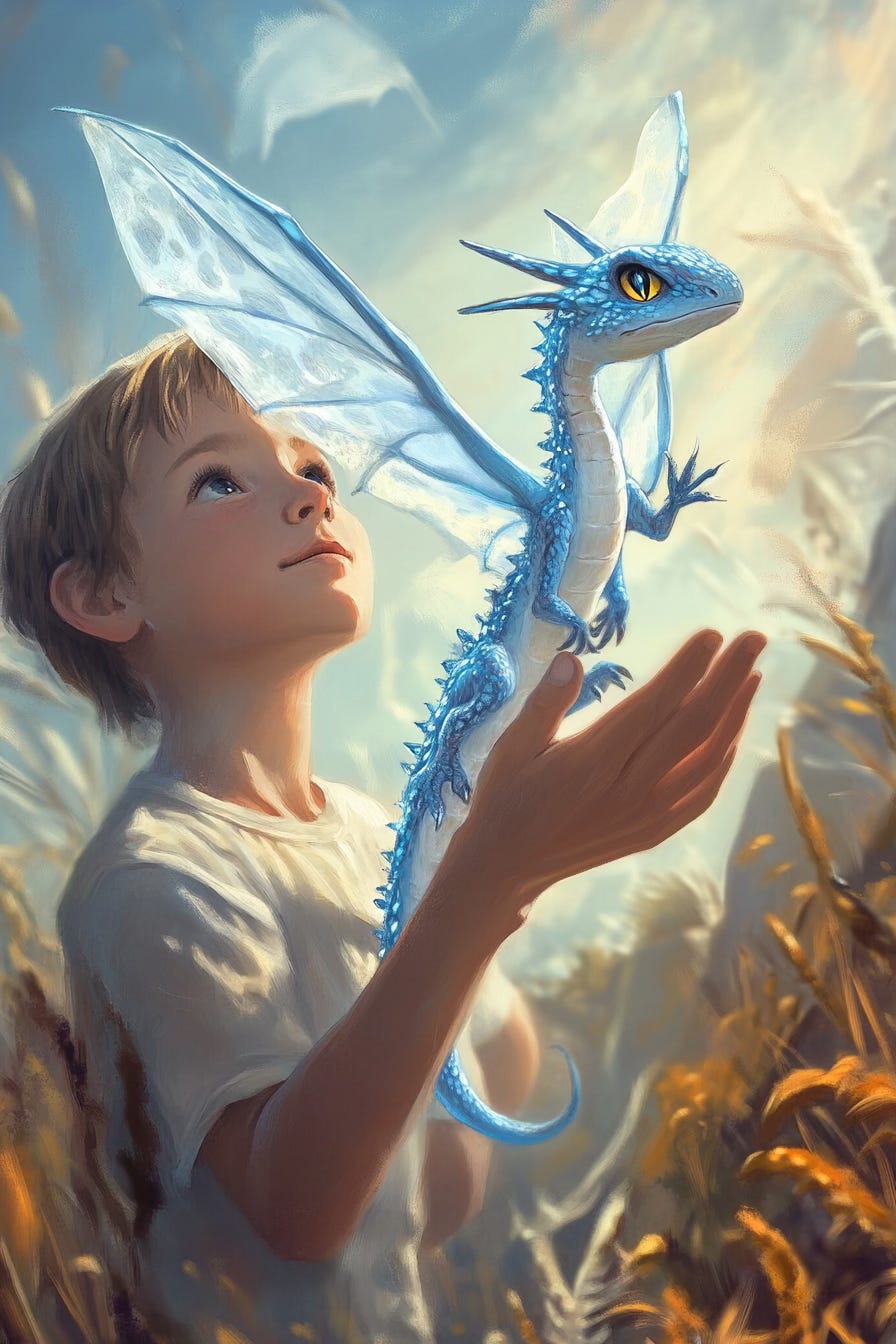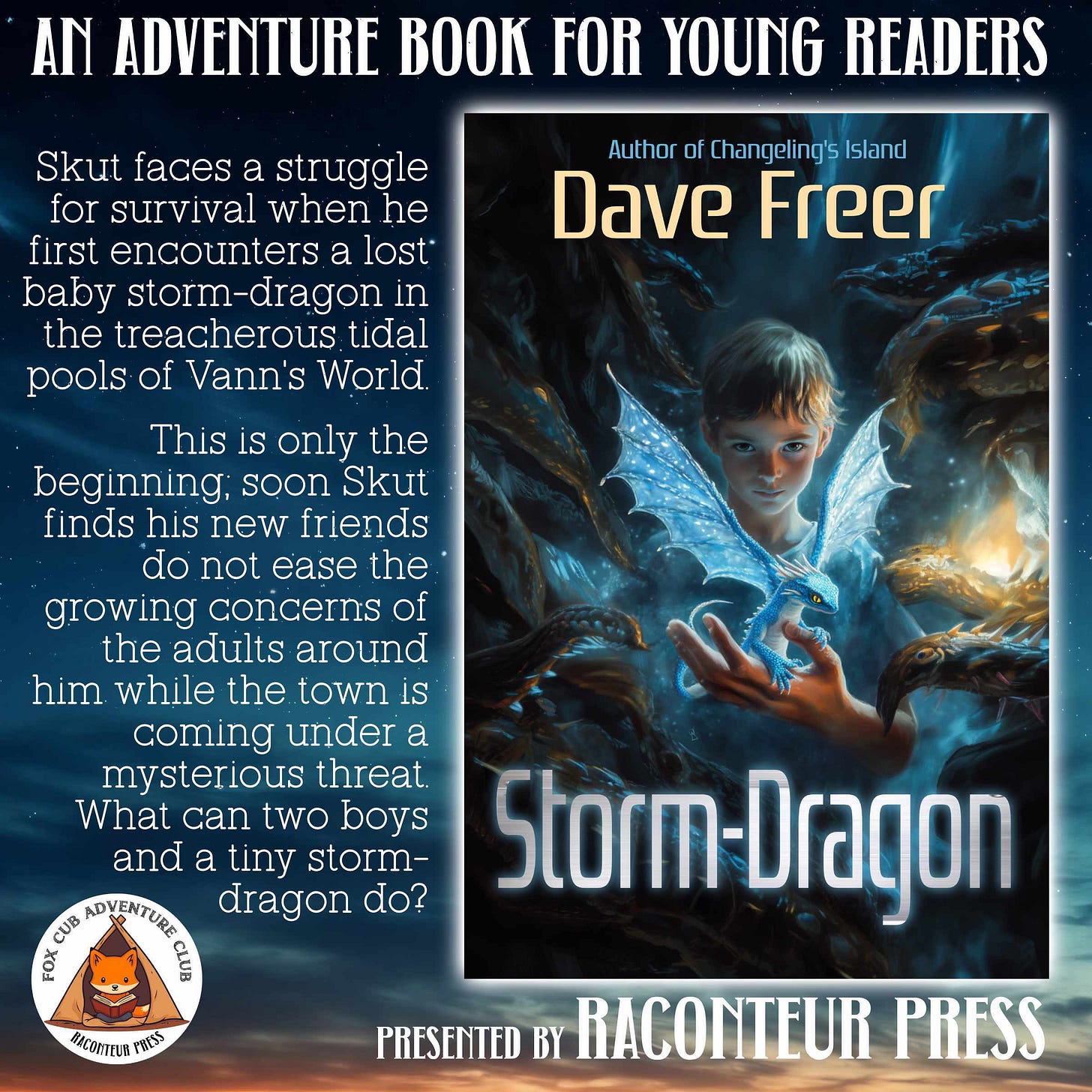Prometheus-Award winning author Dave Freer brings us a to a whole new world in STORM-DRAGON!
Meet Skut and Podge, two boys who’ll grab your son’s attention from page one. Skut’s a fearless kid battling savage winds and vicious hamerkops—think killer birds—to save a mysterious, telepathic creature charged with electrical energy. Running from a rising tide and a terrifying Loor-beast, Skut bonds with this tiny “storm-dragon” that views him as a hero. Their daring escape from Highpoint Station turns into a heart-pounding journey of survival across the deadly tidal zones of their world. Now, Podge is the new kid just trying to fit in. Befriending Skut and his weird little creature is the best thing that’s happened Podge on this crazy world—especially when they team up to dodge bullies! But trouble’s brewing: the adults are worried about a shadowy threat closing in on their town, and the two boys, plus one tiny storm-dragon, might be the only ones who can stop it.
Author’s notes on the universe of STORM-DRAGON:
This story is set in a future universe where the frontier between man and the unknown is close and vast. Faster-than-light travel exists. Humans have spread to and colonized many strange worlds. So far, no intelligent aliens have been encountered, but that could change tomorrow. Earth–the source of most advanced technology, has–after a failed attempt to control the colonies, resisted by the Confederated Worlds–withdrawn into itself and cut them off, in an attempt to bring the colonies to heel. The colonies don’t care. Technology has slipped back a bit, but they have not gone crawling back to Earth rule. Colonists, frontiersmen, have bigger problems–like staying alive and building homes on new worlds, such as Vann’s World, where this story is set.
Vann’s World is younger, geologically, than Earth, with more water. It’s a wild, terrifying, exciting world of volcanoes, and huge storms that make hurricanes look pleasant–especially around the equator. It has three moons, so enormous tides, and it is just bursting with life-where everything tries to eat everything else, in its fertile seas and across hundreds of chains of volcanic islands, forming and eroding away.
Close to the pole, in the volcanically quietest area, is the Bering archipelago. Settlers came to farm here, on a seven hundred mile chain of thousands of islands. Every island is encircled by a sponge-like layer of coralline. Exposed at low tide this forms the first tier, a wide-mostly flat layer up to mile wide, around the islands (helping to break the force of the waves).
Every pool hides strange and deadly creatures, and when the tide rushes across it, so do the predators. Inside that, is the second tier forest, on the rock of the island itself, like a vast mangrove swamp with the tangled roots trapping the tide-water and washed down nutrients—the root-dams are muddy and full of life, some of it dangerous, all of it hungry, full of traps for the unwary. The ‘trees’ are not mangroves though—they’re a form of seaweed that absorbs water with the incoming tide to lift the branches and leaves and fruits above the creatures coming in with the tide, to protect them. Think of it like a bouncy castle where the ‘trees’ slowly deflate at low tide and then inflate again at high tide. The very high tide spills a little beyond the forest, when the third moon adds its attraction. Above that, the land is relatively safe. There are no trees, just grass-like plants and thickets of ‘willow-withy’ – dense and woody but flexible plants about a half inch wide, and up to eight feet high. It’s here our settlers made their homes… until the recent Ghat-Confederated Worlds’ war.
The War seems over…"
PUBLISHING APRIL 11, 2025!







What’s the intended age for this? Looks great but I have fairly young readers.
Well, how cool is that!!!?